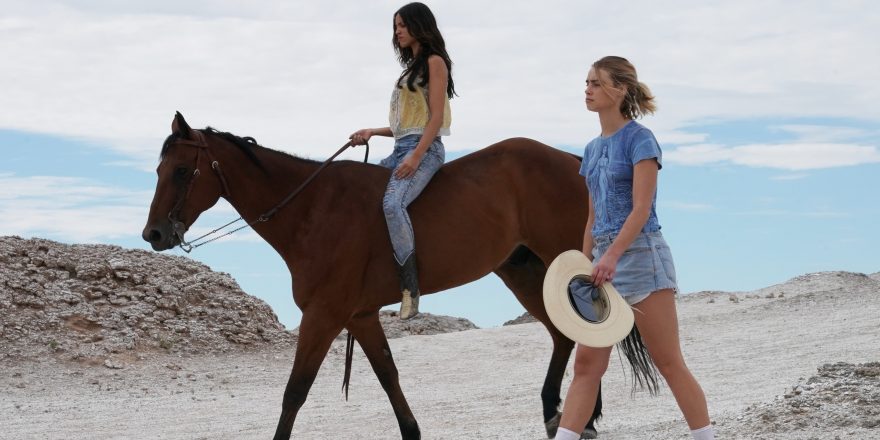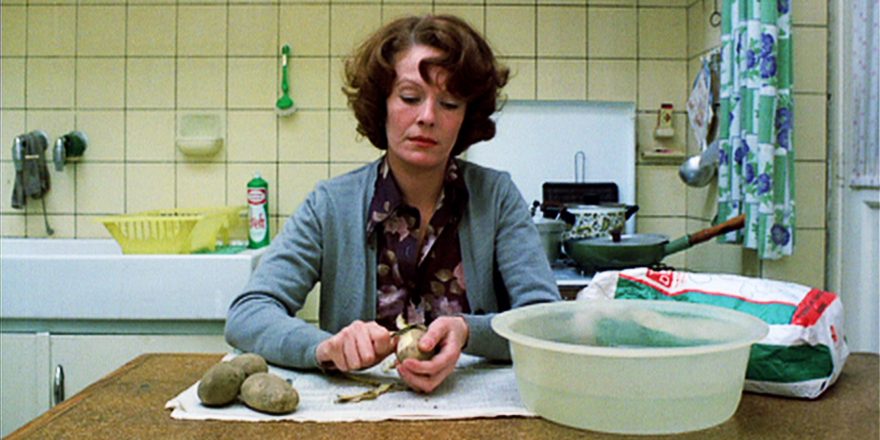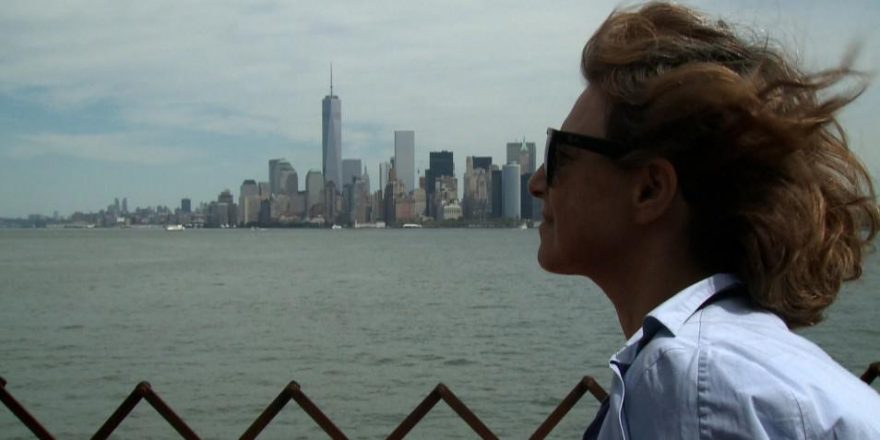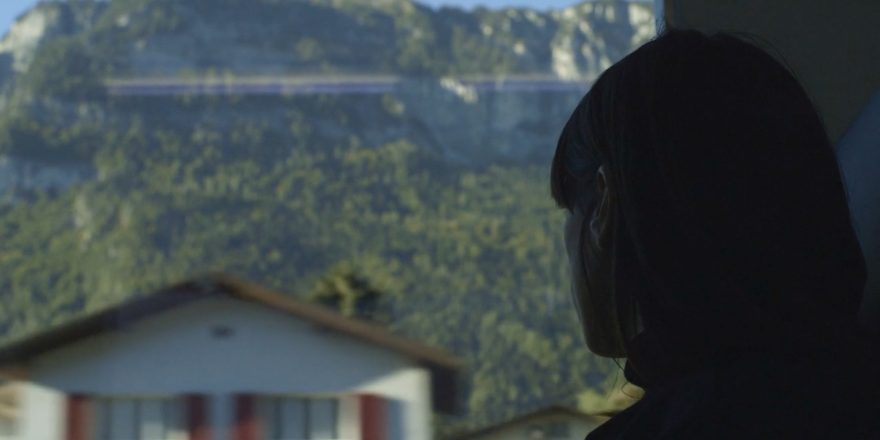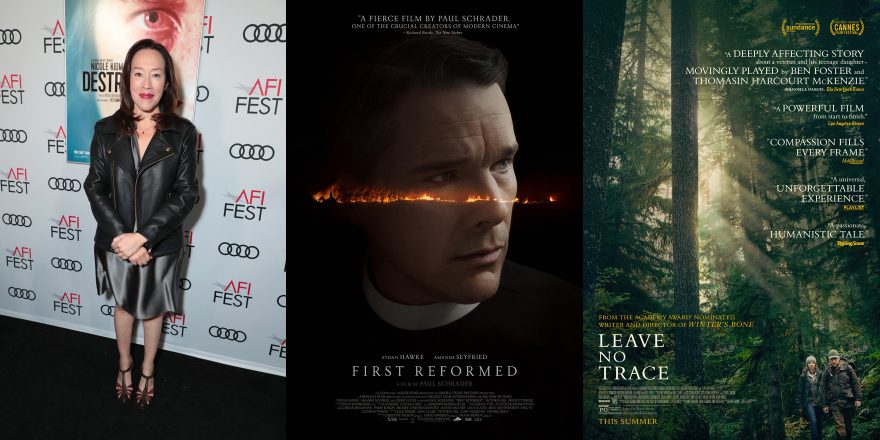She’s Missing is a story about two women in a middle-of-nowhere desert town, their tempestuous friendship and what happens when one of the women goes missing and the other embarks on a search across the desert to find her. It is being marketed as a thriller with police cars on the poster, but actually there are no police cars in the film. The person who goes to see my film expecting a straight thriller will leave disappointed. The original title of the film was Highway and that went a little way in describing the thesis and setting of the film – the lure and violence of America by road. I’ve become fond of the new title; it’s germane and sensible, and it does what it says on the tin, as 30 minutes in – guess what? – one of the main characters goes missing. The film remains about the friendship of these two women, Heidi and Jane, their power struggle, and the world they live in, a border town on the side of a highway. They work as waitresses in a diner and a casino, respectively, and in those positions they are constantly being used and misused by male customers and the ever-present truckers of the highway. Jane seeks a way out and finds it, and Heidi can’t deal. She can’t believe Jane could leave her of her own volition, so she begins a search for her, edging closer and closer to a dark destiny that her dreams forecast.
In this piece, I’ll discuss three films that inspired me in the making of She’s Missing, films I believe would be less interesting if they were more tidy. I’ve stuck to movies from the past 20 years because everything older than that seems to get re-evaluated – if the films are still available and being watched, the cream usually rises to the top. L’Avventura (another touchstone for She’s Missing) was booed at Cannes, but has almost no negative reviews on Rotten Tomatoes.
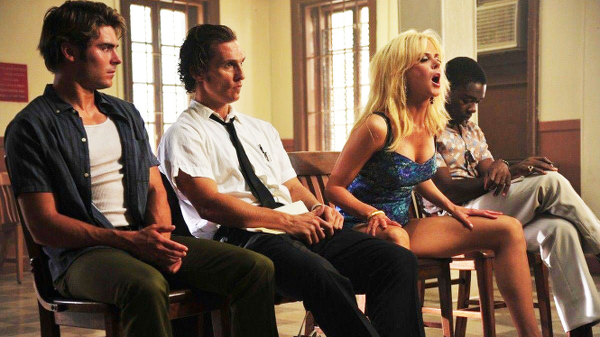
The Paperboy (2012)
Lee Daniels’ film, based on the Pete Dexter’s novel, is set in the summer of 1969 and focuses on the murder of a racist Florida sheriff, the subsequent arrest of Hillary Van Wetter (John Cusack), and the band of journalists who, with Van Wetter’s girlfriend (Nicole Kidman) seek to get him released. In a way, the whodunit plot of The Paperboy is the least important thing about the whole film and, for that reason, the story can sometimes be hard to follow. That doesn’t really matter, though, as the film shows racism and sexism in the American South in such a lucid way; I was inspired by its sense of place and time.
The Paperboy is not subtle. It’s melodramatic, disjointed, maybe over the top. Many reviews called it tasteless, and it was also booed at Cannes (what wasn’t?!). There are jump cuts, slo-mo, black-and-white sections, POV fantasies. There are hardly any establishing shots, and Daniels uses breakneck cutting. I think the film is amazing. Tacky, sweaty Florida with washed-out pops of pink and turquoise everywhere, Macy Gray as the narrator grounding the film in a wonderful whacked-out performance, loose handheld wide-shots and looser handheld mid-shots that follow the wild performances of the actors. The thing about the film that everybody talked about when it was released was that scene where Nicole Kidman pees in Zac Efron’s face, so there’s that …
I like that you can see the ideas and the seams. There is one sequence where Matthew McConaughey and Zac Efron venture into a swamp. The footage looks like Diane Arbus doing a National Geographic assignment on central Florida, and it is pretty disturbing. It is a total style break from the rest of the film. There is another scene where Nicole Kidman and Zac Efron share a heartfelt waltz as if The Graduate was a love story.
The film was a big reference for our costumes and design. We chose a color palette that was like a bleached-out American flag, with pops of reds and blues throughout. Seeing these movie stars giving such big performances in such a pulpy film gave me permission to do things in She’s Missing that I might not otherwise have done, like convince Josh Hartnett to wear a bright pink kaftan, or jumpcut Eiza González’s spangly rodeo queen speech.
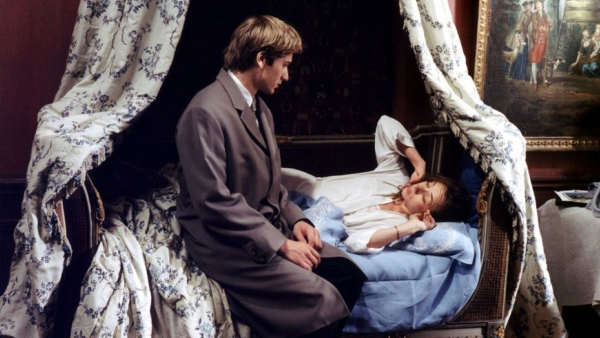
La Captive (2000)
When I initially saw Chantal Akerman’s loose adaptation of Marcel Proust’s novel La Prisonnière at film school, it did not make a big impression on me.
However, when I saw La Captive again in a cinema when I first moved to Los Angeles in 2014, it was a revelation. It is certainly not the crown jewel in Akerman’s canon. That honor goes to her epic of domesticity, Jeanne Dielman, 23 Commerce Quay, 1080 Brussels – which she made when she was 25 years old! (Sidebar: What confidence and self-assurance to have made a film like that at 25. I was 25 when I made my first feature, Lotus Eaters. There are things in that film that are really great and things that I couldn’t/wouldn’t try now – such is the bravado of youth. I was so referential, so in love with French New Wave, I couldn’t help but rip it off.)
La Captive is wildly different to The Paperboy. It was called slow and boring by some critics. Its scenes are very lengthy and the performances restrained, the costumes very minimal ‘90s Kate Moss – slinky dresses and slingbacks. Watching it almost becomes a meditation. Seeing Akerman’s films, and this film in particular, gave me permission to hold on a scene for longer than expected, to see if once its use in plotting had been served, there was a use beyond that – can we know more about the world or the character by just sitting with them?
La Captive partly inspired the relationship between Heidi and Jane in She’s Missing. I already knew I wanted to make a film about a type of female friendship that I think a lot of girls experience in their teens or early twenties, when that friendship is the main thing in your life, it’s obsessive and codependent and there is often a power struggle element to it. I had a friendship like that when I was younger, and a certain point our parents banned us from seeing each other. We were bad influences on each other, it was decided. I was heartbroken.
La Captive gave me the idea that I could tell the story of Heidi and Jane’s friendship best if one of the characters was always in pursuit. I suppose it is Proust’s idea but Akerman films it in a way that makes it her own.
In La Captive, Simon (Stanislas Merhar) follows his girlfriend Ariane (Sylvie Testud) all over Paris in a Vertigo-esque fashion. It’s part of their relationship. He obsesses about her to the extent that he cannot allow her out of his sight, and when she is with him he only worries about what she will do when she leaves. In She’s Missing, Heidi and Jane’s friendship is uneven. Heidi is obsessed with Jane, not in a sexual way (although it could be argued that she has those feelings also), and Jane defines herself through Heidi’s eyes, because she always sees the best in her and to Heidi, she’s a small-town superstar.
Akerman said of the relationship in La Captive, “She is the captive because she has no identity outside of Simon’s obsession.” Jane has another identity outside of Heidi’s love, but when Heidi learns of it and is disappointed by the baseness of it, she leaves her. In La Captive, when Simon learns of Ariane’s other life, he is driven to possess her further. In both films, it ends in tragedy; as I learnt from my obsession with French film, that is the only ending.
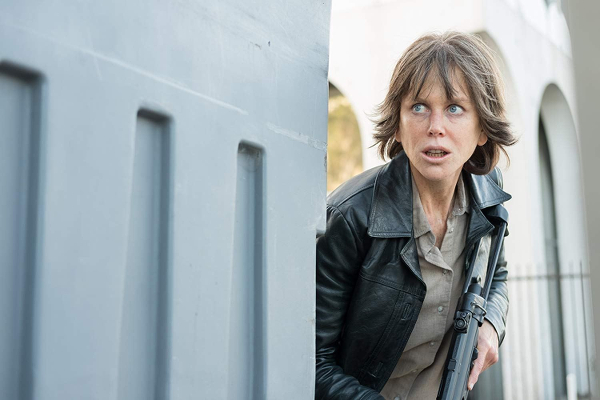
Destroyer (2018)
Choosing Karyn Kusama’s film is a bit of a cheat as it was released after I’d shot and had started cutting She’s Missing, but it was a big influence in the final edit.
Heidi and the protagonist in Destroyer, Erin Bell (Nicole Kidman), are similar characters in that they’re both on a dogged solo search across weird and violent terrain. They’re kindred sisters. They are women on a mission, they lack vanity, and they are both lonely, although Erin has been alone for so long that she doesn’t even realize it. Erin is seeking atonement and revenge and Heidi is seeking Jane and ultimately her own identity.
Kidman gives a gripping performance as an alcoholic detective who has banished any remnants of femininity and has destroyed her relationship with her daughter in an attempt to settle a decades old grudge. The film embraces Erin’s perspective; we can’t trust what this woman remembers and experiences, but we are thrust into it and made to experience the memories which she tortures herself with.
Destroyer is a classical tragedy with a cyclical self-fulfilling plot: Everything Erin does is to save her daughter and destroy herself, but her actions conversely make her daughter believe that she doesn’t love her. She’s Missing is structured in a similar way. Heidi has a destiny, and I wanted her to be both running away from and towards that destiny, the closer she gets to finding Jane, the closer she gets to her own tragic ending.
Destroyer suffered from being marketed as a straight revenge film, and those looking for a tidy version of this genre were probably unhappy. (Karyn Kusama said she learned to stop referring to the film as “character-driven” when she was seeking financing for it.) With someone else at the helm, Destroyer could easily have been a straight shot, a commercial genre movie that colored within the lines, but what Kusama does best is to subvert genres. The best example of this is her film The Invitation, a truly shocking and unconventional L.A.-set horror film, which I think about every evening when I stand on my deck and look out over the hills in Silver Lake.
By chance, two of the films I’m discussing star Nicole Kidman, though it’s not totally surprising as her filmography is stacked with supposedly mediocre films that are really imperfect masterpieces, from Birth, The Portrait of a Lady and Fur to In the Cut and Margot at the Wedding.
Kidman has worked with the most interesting directors, a lot of them women, and her attachment has allowed them to first get funding and then run free with wild ideas. Nicole Kidman said of Kusama in an Indiewire interview, “She’s had hits and failures. It’s easier to get behind the 25-year-olds. You’ve got to allow women sometimes to come out of the gate. They have to build up experience and learn and get better and then someone else invests in you a bit more; you stretch and you go. We’ve all got to keep saying it, or it will all just fade away.”
She’s Missing will probably not have a perfect Rotten Tomatoes score, as it’s not that type of film. There have been some great, nuanced reviews of it, but I know some people will not like it. I hope a few will love it, though, just as I love these films with less than perfect scores. When choosing what to stream or go and see in a theater, if you can look past its Rotten Tomatoes percentage, you might find something unusual that speaks to you.



